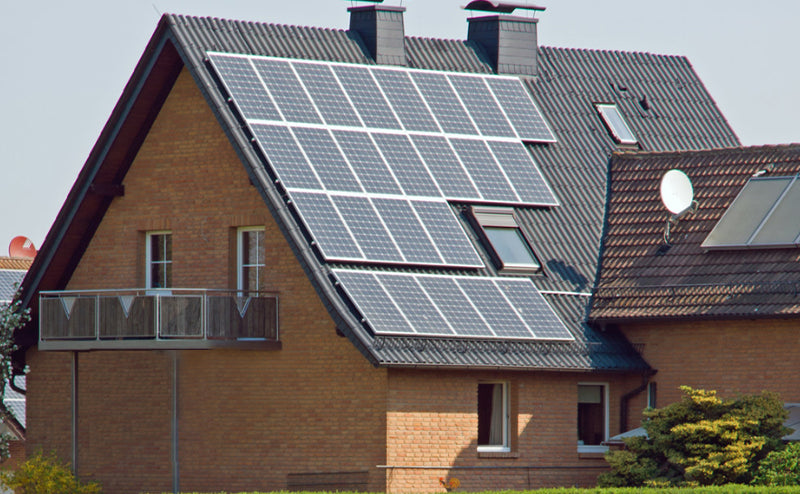Patented sieving process developed by research team at UNSW Sydney significantly improves the way important materials from photovoltaic panels can be separated and extracted for reuse.
Around eight million tonnes of photovoltaic waste are estimated by the International Renewable Energy Agency to be produced globally by 2030 as solar panels come to the end of their life. That figure is expected to rise to 78 million tonnes by 2050. Image from Shutterstock
UNSW Sydney engineers have developed a new, more effective way of recycling solar panels, which can recover silver at high efficiency.
The process, which has been patented, has been specially created for photovoltaic panels in order to quickly and efficiently sort the component materials, as a key step of highly efficient PV recycling.
Recycling solar panels thoroughly has proven difficult up to now since the individual parts, such as glass, silicon, metals, wiring and plastic, are integrated in such a way that makes them hard to separate.
To be reused, solar panel components need to be carefully separated to avoid contamination with other materials. Manufacturers will only reuse materials that have a high purity – which has proven very hard to achieve.
That means the vast majority of solar panels could end up in landfill, rather than being recycled to the benefit of the environment.
But now a team from the ProMO lab led by Professor Yansong Shen has announced a new process which offers an effective separation of 99 per cent of PV cell particles.
“PV panels usually last for around 20 or 25 years, so given the growth in domestic solar power since the 1990s we can see there is a very pressing and urgent problem to deal with those first generation of panels that are coming to their end-of-life,” Prof. Shen says.
“We want to reuse and recycle those panels, but at the moment there is very limited research and very limited technology to allow us to do so effectively and prevent them from just ending up in landfill.
“Putting solar panels into landfill is a big issue because there are a number of harmful metals in the panels that can pollute the soil and pollute the water. So for environmental reasons we also need to find a better way to recycle the panels.
"At the same time, the end-of-life is a source of many valuable metals like silver if they can be properly recycled.”
According to estimates from the International Renewable Energy Agency, the cumulative PV waste volume on a global scale will reach up to eight million tonnes by 2030. And that figure soars to potentially up to 78 million tonnes of waste by 2050 as successive generations of solar panels installed at the start of the century come to their end-of-life.
The ProMO research team at UNSW calculate that between 5-50 million kilograms of silver could potentially be recycled from the cumulative waste by 2050 using their process, given that the equivalent of around 0.64kg of silver per tonne of PV waste has been recovered in tests.

The new patented recyling process from researchers at UNSW uses sieving aids to more effectively separate the material that makes up a solar panel, allowing valuable elements such as silver to be recovered and reused. Image from Professor Yansong Shen/
Sieving aids
Prof. Shen’s team have been working for nearly three years on developing their new processes, funded by federal ARENA and NSW EPA grants, which integrate conventional methods with a very highly abrasive separation system using the addition of sieving aids.
The first existing step to recycle PV panels involves the removal of large components such as the aluminium frame and glass sheets to just leave the solar cell.
“The next step is the crushing the panel and separation of material inside the solar cell and that is currently one of key bottlenecks for the whole system,” says Prof. Shen.
“If we do not have a simple method for high-abrasion separation, then we can’t effectively move on to the third step which is recovering the various material that has been separated and being able to reuse it.
“The key to our new process is the addition of the sieving aids which help to crush the solar cells into smaller particles allowing a better separation of all the components. That makes it much easier to recover important elements such as the silver contained in the solar cells.”
The entire crushing and sieving process, which occurs inside a vibrating container, takes only around 5-15 minutes to effectively separate 99 per cent of the PV materials.

The new patented PV recyling process developed at UNSW involves crushing and sieving material inside a vibrating container for around 5-15 minutes. Image from Professor Yansong Shen
The team discovered that using stainless steels balls as a sieving add provided the most optimal solution for the process.
“We spent around three or four months working on that element, also testing with sieving aids made of clay or plastic,” says team member and MPhil candidate Chengsun He.
“We can use different size sieving aids for different stages of the process. The main goal is to ensure that all of the PV cells particles can be crushed by the sieving aids, while the glass and other significant material remains intact at the top.”
Industry collaboration
Once the material has been separated using the new patented process, the team can employ a traditional chemical leaching, as well as precipitation to extract the specific elements such as pure silica and silver.
In tests, using their process, the researchers were able to extract 99 per cent of silver from a solar cell for potential reuse.
“Our group of 30 researchers is the largest in Australia working on PV recycling technology development, not lifecycle assessment (LCA) only, and probably one of the largest in the world. This patent is just one part of one recycling process for end-of-life solar panels and we are also working on other solutions to the other steps,” says Prof. Shen.
“We are working with some industry partners already, but we would like to engage in more industry collaborations to scale this process up and enhance the economic feasibility of the PV recycling process.
“I think people are just starting to realise how important it is that we can recycle these PV cells in an environmentally friendly way.”
For more information, please click here: https://isolarparts.com
Twitter: Solarparts Instagram: Solarparts
Tumblr: Solarparts Pinterest: Solarparts
Facebook: Shenzhen Solarparts Inc
Email address: Philip@isolarparts.com



